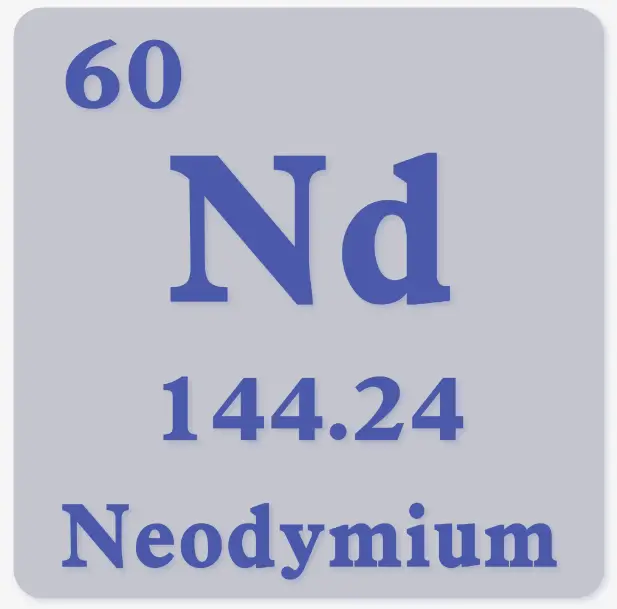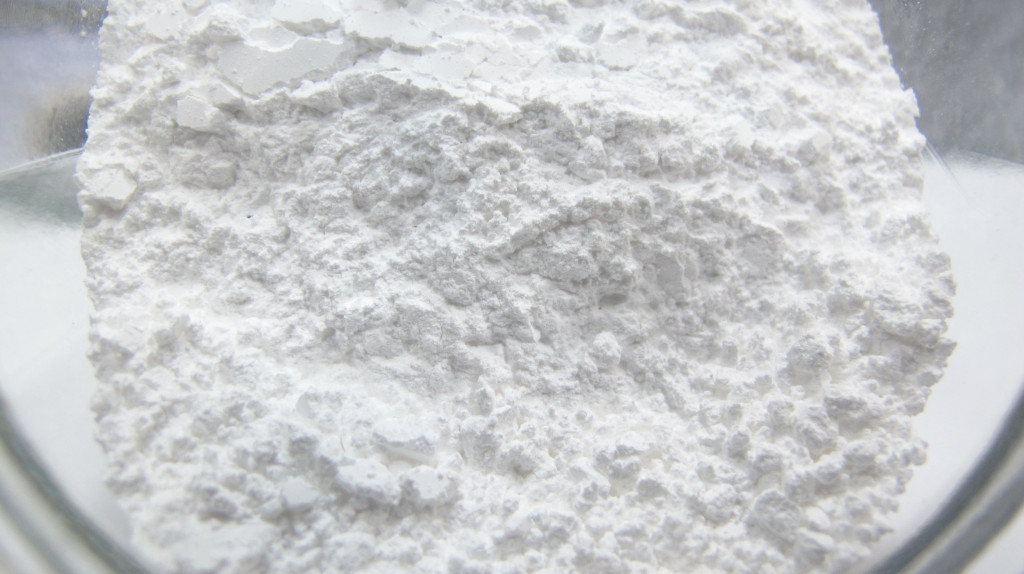Introduction
Neodymium was discovered in 1885 by Austrian chemist C. A. von Welsbach in Vienna. Interestingly, the name “Neodymium” comes from the Greek words “neos” (νέος), meaning “new,” and “didymos” (διδύμος), meaning “twin.”
Naturally occurring neodymium consists of seven isotopes: stable isotopes 143Nd, 145Nd, 146Nd, 148Nd, the most common 142Nd, and long-lived primordial radioactive isotopes 144Nd and 150Nd. In addition to these natural isotopes, there are 31 synthetic radioactive isotopes of neodymium, with the longest-lived being 147Nd. Furthermore, 13 nuclear isomers are known, with the most stable ones being 139mNd, 135mNd, and 133m1Nd.
Neodymium does not exist in its pure metallic state in nature. Instead, it is primarily found in minerals like bastnäsite and monazite sands, typically constituting 10–18% of total rare earth content. Pure metallic neodymium was not isolated until 1925.
Neodymium (Nd)
Atomic number: 60
Atomic mass: 144.242 u
Electron configuration: The outermost electron structure of neodymium is 4f4 6s2.
Physical/Chemical Properties
Neodymium is a moderately hard, paramagnetic, and slightly ductile silvery-white metal. It is chemically reactive and rapidly oxidizes in air, so it is often stored in plastic-sealed containers or immersed in mineral oil to prevent oxidation. It reacts with water and acids, releasing hydrogen gas.
Main Applications of Neodymium
- Permanent Magnets: Neodymium magnets are among the most powerful commercially available permanent magnets.
- Neodymium-iron-boron (NdFeB) magnets are the most widely used type of rare earth magnets. They find extensive application in motors, electronic devices, disk drives, magnetic separators, magnetic valves, and many other devices. For instance, they are used in high-power, lightweight motors in hybrid vehicles or in generators within aircraft and wind turbines to produce strong magnetic fields.
- Glass and Ceramic Colorants: Neodymium oxide is commonly used as a colorant for glass and ceramics, producing richly colored glass, ceramics, and enamels. It is also used in protective goggles for welders and glassblowers, as well as in constructing selective astronomical filters. Neodymium was first commercially used as a glass dye in 1927 and remains a popular additive in glass manufacturing today.
- Laser Material Dopants:Neodymium is widely used in solid-state lasers to generate high-power laser beams, such as in neodymium-doped yttrium aluminum garnet (Nd:YAG), neodymium-doped yttrium lithium fluoride (Nd:YLF), neodymium-doped yttrium vanadate (Nd:YVO4), and neodymium glass. These lasers are used in material processing, communications, medicine, dentistry, and various industrial applications.
- Antireflective Coatings for Glass: Neodymium oxide is used in antireflective coatings on optical glass, reducing reflections and enhancing the performance of optical systems.
- Nuclear Applications: The isotope 143Nd is used in nuclear physics research and as fuel in nuclear reactors.
- Optical Lenses and Devices:Neodymium glass is used in optical lenses, optical devices, and laser materials, producing high-performance optical systems. It is also employed in purple glass dyes, praseodymium-neodymium glass, ceramic capacitors, and other optical components.
- Audio and Headphones: Neodymium magnets are widely used in audio equipment, microphones, in-ear headphones, and professional loudspeakers, providing high-quality audio performance.


